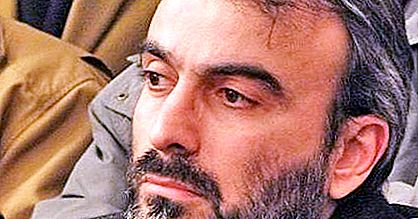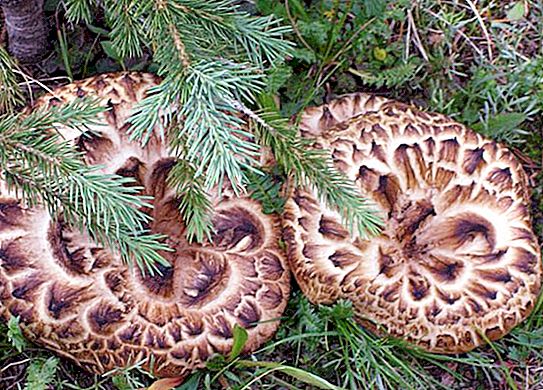For two and a half centuries, Russia fought with the Ottoman Empire - first for access to the Black Sea, and then in order to strengthen its position in the Caucasus. In this regard, Empress Catherine II successfully continued the foreign policy begun by Peter the Great.
During the years of her reign, the Russian Empire not only gained free access to the Azov and Black Seas, but also annexed the Crimean Peninsula, becoming a real sea power. In honor of the victories of Russian weapons, talented architects and sculptors created commemorative monuments. One of them is the Chesme column in St. Petersburg.
Background
In the middle of the XVIII century, Turkey continued to reign supreme in the Black Sea. Despite the attempts made by Peter I to gain a foothold on its shores, Russia at that time did not have a Black Sea or Azov flotilla. Therefore, the government of Catherine II in foreign policy considered the southern direction a priority.
Nonetheless, Russia did not start the war. Turks and their allied Crimean Tatars at the end of 1768 invaded the northern Black Sea region. In order to strike Turkey from the rear, as well as support the upcoming Christian uprising in the Balkans, it was decided to send the ships of the Baltic Fleet to the Mediterranean Sea.
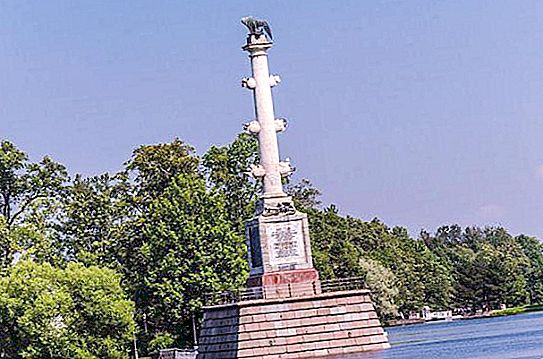
In the summer and autumn of 1769, two Russian squadrons led by Admirals Grigory Spiridov and John Elphinston left Kronstadt. General management of the expedition was entrusted to Count Alexei Orlov.
Sailing around Europe for Russian sailors was not an easy test. The first ships entered the Mediterranean Sea in November, and in the spring of next year the two Baltic squadrons joined together and began to prepare for battle, as the Chesme column in Tsarskoye Selo recalls.
Victory over the brilliant Porta
The first major battle took place in the Strait of Chios on June 24, 1770. The Turkish fleet was twice the size of the Russian squadron, in addition, it occupied an advantageous strategic position. Despite this, after a difficult battle, the Turks retreated to Chesme Bay, which was considered almost impregnable.
On the same day, the military council decided to complete the rout of the Turkish fleet right in Chesme. The Russian ships blocked the narrow exit from the bay and around midnight the battle began, which was later recognized as one of the largest in the history of the sailing fleet.
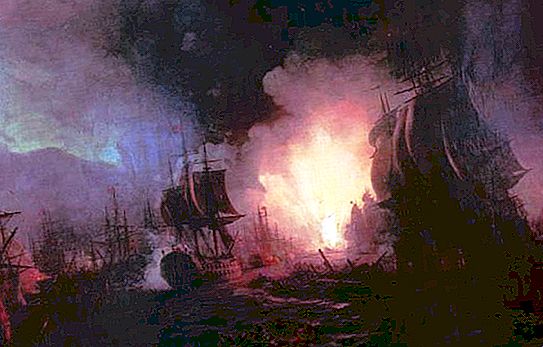
On the night of June 26, the Turkish fleet was completely destroyed, the crews of the ships and the Chesma garrison fled to Smyrna. No one in Europe expected this. In honor of the triumph of the Russian fleet, the rostral Chesmenskaya column was later installed in the Catherine Park of Tsarskoye Selo.
All participants in the famous battle with the decree of the Empress were awarded commemorative medals. The Chesmensky palace and church were built in St. Petersburg, an obelisk was erected in Gatchina, and a column in Tsarskoye Selo.
Antique prototype
While Russia entered the war with the Ottoman Empire, work on the breakdown of the park began in Tsarskoye Selo. When the news of the victory at Chesme reached St. Petersburg, Catherine II instructed the architect Rinaldi A. to create a column similar to the rostral pillar, set up in Rome in honor of the victory of the consul Guy Duilia over the fleet of Carthage.
It was decided to erect a monument in the middle of the Great Pond, dug earlier by Swedish prisoners of war. Work continued for several years. During this time, the outlines of the coastline of the pond were changed to give them the outline of the Aegean Sea.
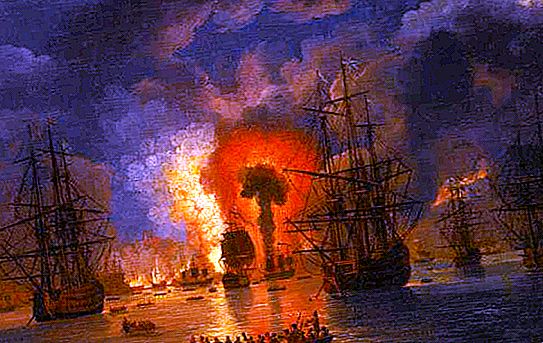
The Chesme column is made according to a sketch personally approved by Catherine II. The Empress was not mistaken: the majestic and at the same time noble-restrained antique forms of the monument were the best suited to express the triumph of the Russian fleet, which predetermined the outcome of the war.
Short description
The Chesme column is a work of the Italian architect Antonio Rinaldi, who was in Russian service, and the sculptor Johann Schwartz, who created the bronze elements of the monument: an eagle and bas-reliefs.
The granite pedestal rising from the water is made in the shape of a truncated pyramid, while the column itself is made of solid Ural marble. The monument is crowned by a bronze eagle aiming at the Turkish crescent. On the one hand, it symbolizes the victorious Russia, and on the other hand, Count A. Orlov, who received the right to be called Orlov-Chesmensky.
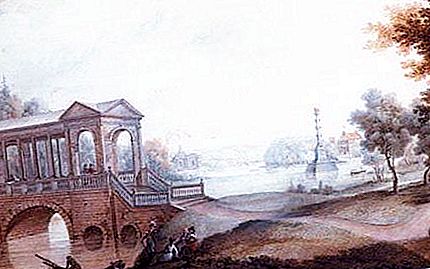
Relief images of various symbols of the East are noticeable on rosters: turbans, bunchuk, quivers, spears, Turkish sabers, standards. Bronze bas-reliefs are dedicated to three victorious battles in the Aegean Sea, in honor of which the Chesme column was established.

